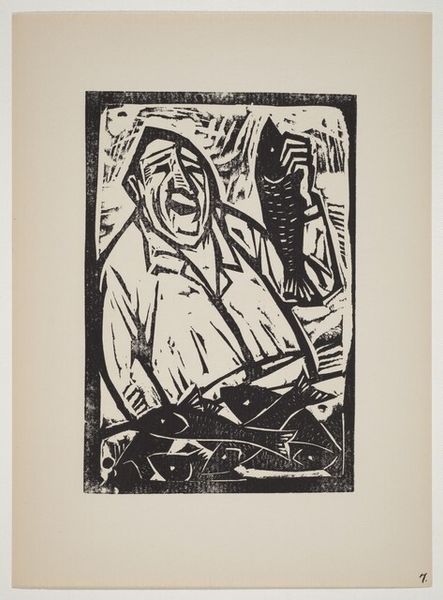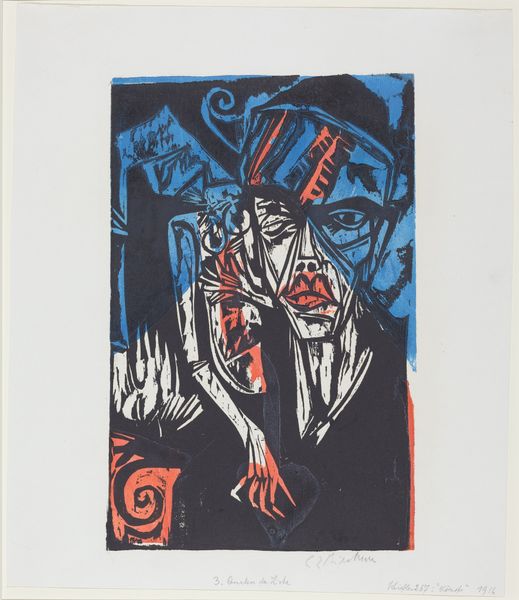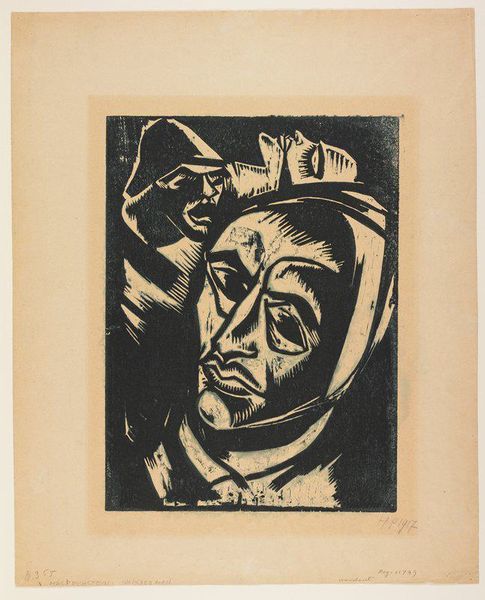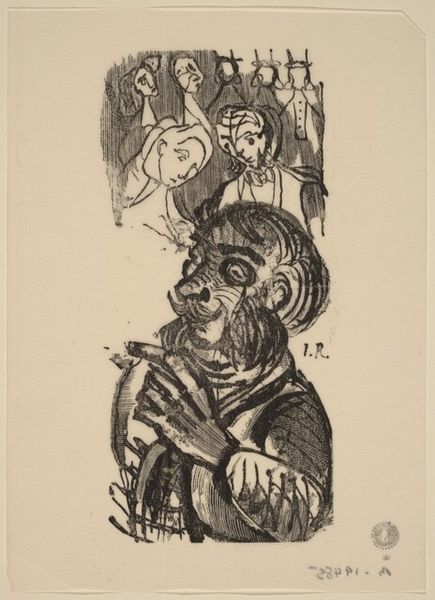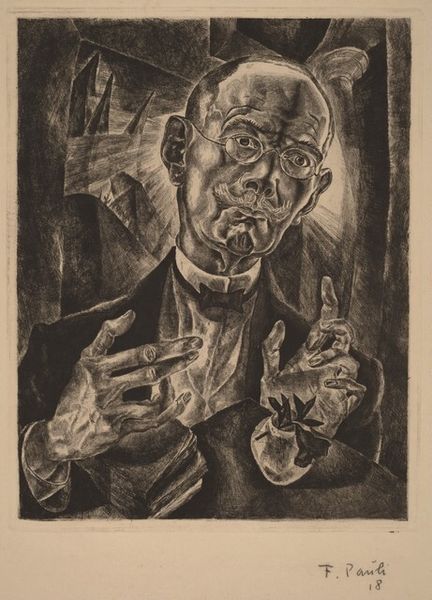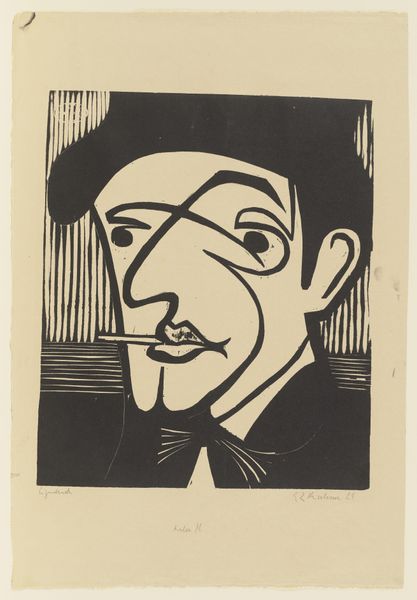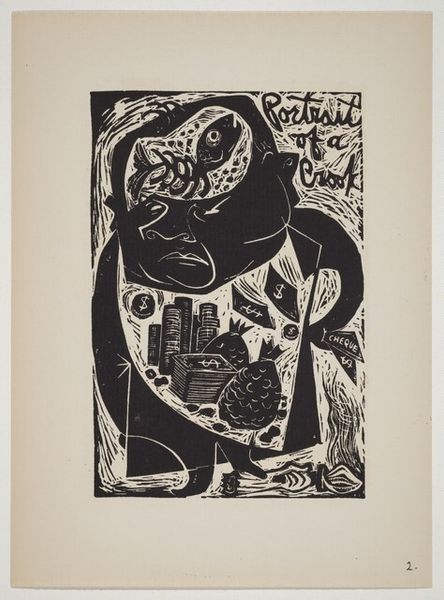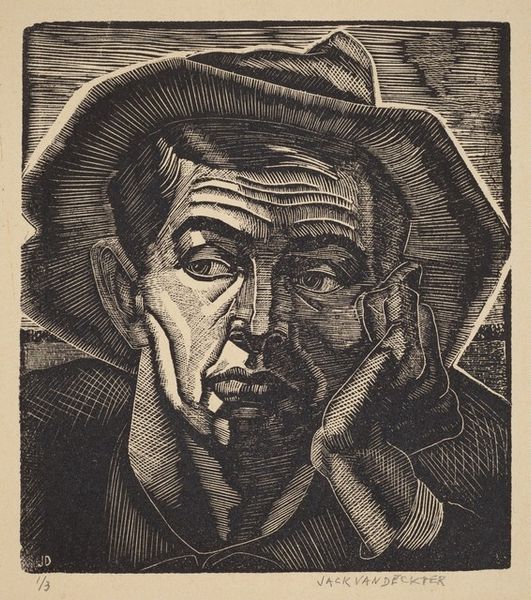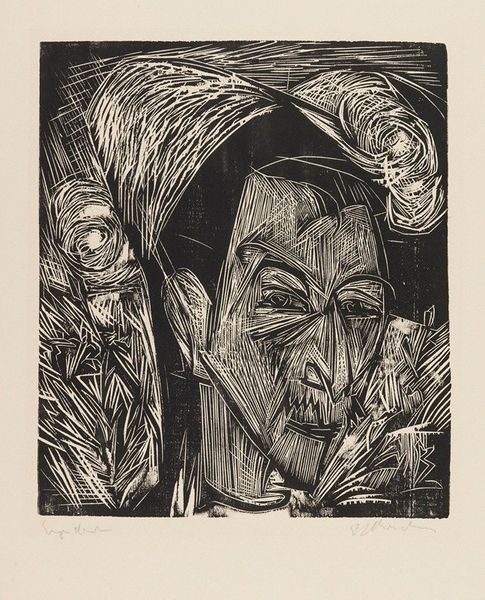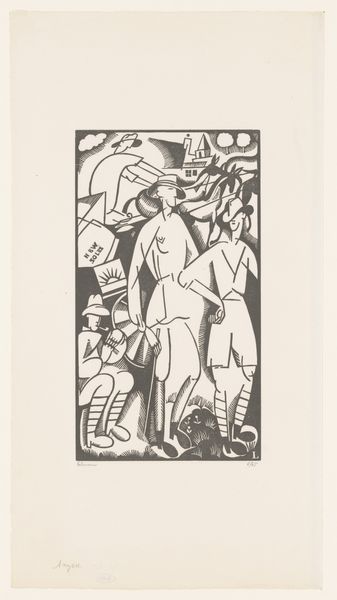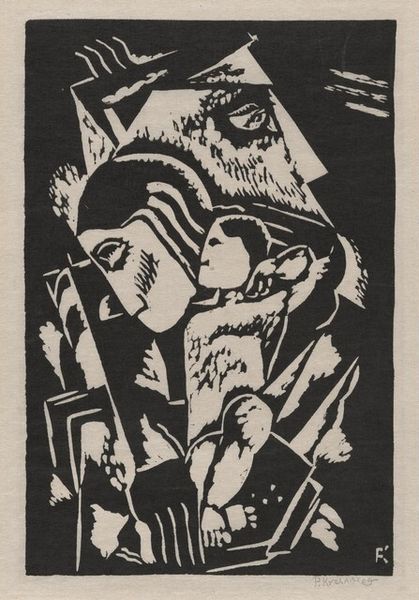
Dimensions: Image: 152 x 102 mm Sheet: 215 x 158 mm
Copyright: National Gallery of Art: CC0 1.0
Curator: Here we have Antonio Frasconi's "Happy Man," a linocut print created in 1950. What strikes you first about this piece? Editor: The raw, almost frenetic energy. The stark black and white contrast, the way the lines vibrate...it's definitely impactful, but not conventionally "happy" at all, quite unsettling to me. Curator: I agree, there’s a tension. Frasconi, who was deeply engaged with social justice, used this piece to make a potent statement on the working class. Linocut, with its accessible tools and bold, graphic nature, became a favored medium for artists wishing to make politically charged work accessible to the masses. Editor: The texture achieved is really dynamic. Look at the varying thicknesses of the lines creating the background, juxtaposed with the solid, defined lines of the figure. Also, note the Union card in his hand – that's key, of course. It’s elevated like a trophy, almost aggressive in its presentation. Curator: Exactly! This is where the social context becomes so relevant. Consider the period, post-World War II, when labor movements were gaining momentum, facing both resistance and celebrating small wins. Frasconi highlights the common man, his struggles and hard-won battles for worker's rights through joining Unions. Editor: Right, it goes beyond pure portraiture. The exaggeration in the caricature – the gaping mouth, the almost manic glint in the eye – these push the boundary between expressing sheer joy to barely concealing underlying tensions. The figure feels less individual and more of an allegorical representation of the working man of his time. The lack of color emphasizes form and message, which keeps the viewer from distraction. Curator: Absolutely, Frasconi is employing a potent visual language rooted in the means and circumstances of making this work – not only is the linocut medium economical, he's able to create a repeatable print that promotes discussion and social change. Editor: So, seeing how all elements combine – technique, theme, historical background – clarifies Frasconi’s strategy and artistry. Curator: It adds depths beyond that initial jolt of unsettling visual dynamism, giving a clearer picture of the human story Frasconi intended to communicate.
Comments
No comments
Be the first to comment and join the conversation on the ultimate creative platform.
